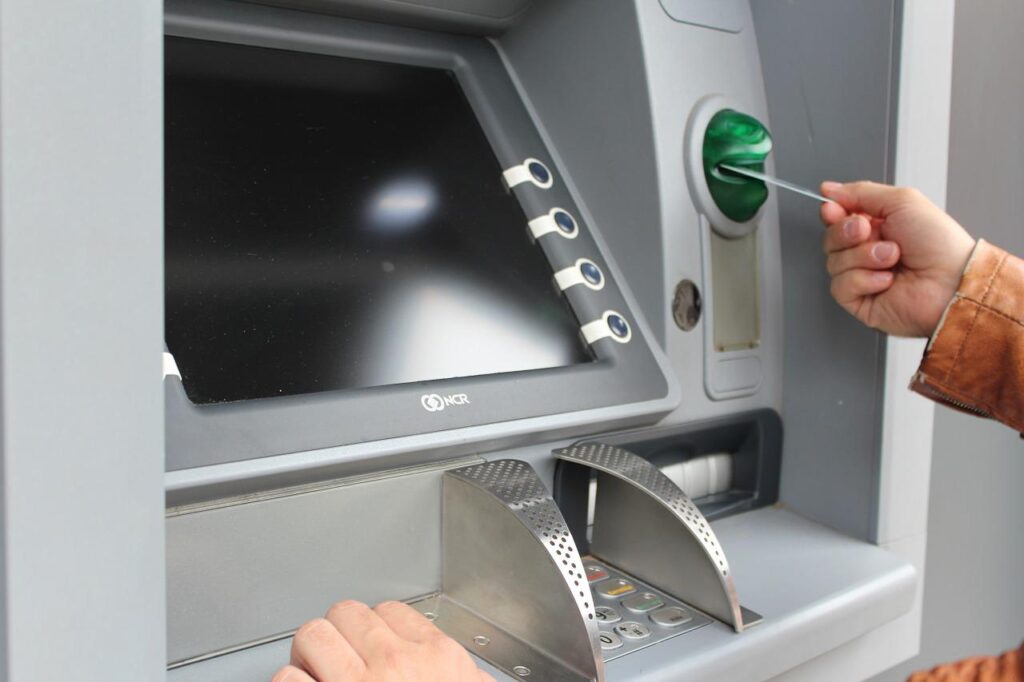
How do banks make money? Banks are an integral part of how the economy works. They are responsible for taking money from depositors and lending it to borrowers. The bank has a number of different ways that they make money, including fees for things like overdrafts or bounced checks. Banks generate revenue by investing in securities such as bonds or stocks. The other way they make money is through non-lending transactions. Here is our best free summary.
1. Interest Charges On Loans
The Banks make money by taking deposits from customers and loaning out the money to borrowers. The people that borrow pay back the loan plus interest. There are different types of bank loans, including personal loans and business loans. The interest rate applicable to the loans is a sum of the cost of acquiring deposits, the cost of risk, and the profit margin. Interest income is the biggest contributor to how banks make money.
2. Fees On Lending Activities
Another way how banks make money is through lending activities. They include fees such as origination fees, commitment fees, and prepayment penalties. The origination fee is a charge where they use a third party to book new business. A commitment fee is for banks allocating capital for un-drawn loan facilities. The prepayment penalty charge is if the borrower pays off the loan before it matures.
3. Cash Services
Another way how banks make money is through the cash services they provide. This includes services like providing ATMs, which generate revenue. Banks also charge a fee for depositing and withdrawing money at the teller window.
3. Trade Finance Services
Trade finance services are another way how banks make money. This includes things like letters of credit and guarantees. The bank charges a fee for these services, which helps to generate revenue.
4. Foreign Exchange Services
When you need want to pay for something in a foreign currency, you will need a bank. This is how banks make money in trading foreign currencies. They buy and sell these currencies on behalf of their customers. They charge a percentage or commission for transactions. Banks also buy and sell currencies on their own behalf through experienced dealers, making millions of dollars.
5. Standing Instructions
Another way banks make money is through standing orders. Standing instructions are when you give the bank order to complete selected transactions. You specify the frequency of withdrawal (weekly, monthly, or yearly). This will support transactions such as monthly bills or annual subscriptions. Banks invest heavily to set up the infrastructure that supports these services and will certainly charge a fee. This is how banks make money over and over for one-time setup activities.
6. Online Banking
Ever asked yourself how banks make money through online banking. This is how. Banks set an infostructure that allows customers to transact with the banks from anywhere in the world provided they have a computer and internet connectivity. Today, you can conduct many services 24/7/365. Online platforms support transactions such as funds transfer. You can also view the status of your account. Online banking charges are normally recovered on a monthly basis. Again banks continue making money over and over through one-time setup of banking for their customers.
7. None-compliance Penalties
Yes, this is how banks make money. Some covenants exist between you and the bank. For example, you should not issue checks if you don’t have money in the accounts. Don’t bank a check in your account unless you are certain the issue has good credit standing. Ensure that you have enough funds in your account to cover standing instructions. Repay your loan commitment on the due date. These are some covenants you have with the bank. Banks charge penalties for none compliance, and these figures ad-up. Penalties are put in place to deter customers from noncompliance and also to cover associated administrative costs.
8. Treasury Operations
This is the heart of the bank. The treasury department in the bank manages all funds. They know the cost of funds circulating in the bank and play a guiding in determining the price of loans. Excess funds/liquidity investment decision is their function as well. These guys know how to play with liquidity to make millions for the banks. They place funds in high-yield money market instruments. Where regulations allow, they can trade in securities as well.
9. Custodial Services
Customers requiring custodial services can go to the bank. This includes holding onto assets for their customers or acting as a trustee. Some services include the safekeeping of securities such as stocks and precious metals. They also arrange for trades of the assets. The bank charges a fee for these services, which helps to generate revenue. And as they say, there is nothing called free lunch.
10. What about Advisory Services?
Banks also make money by providing advisory services to their customers. This is how banks make money from custodial services. These can be in the form of investment advice, insurance planning, or retirement planning. They can also advise on mergers and acquisitions. The bank charges a fee for these types of services.
11. Bank Assurance
Insurance is big business nowadays and is increasingly becoming a major contributor to how banks make money. Banks enter into agreements with insurance to be able to sell their products. This arrangement is mutually beneficial. Insurance companies get more revenues while bank offers their customers convenience, leading to high retention. Banks get commissions from the sale of insurance premiums. Bank assurance is not well accepted in the US as in Europe and the rest of the world.
12. Investing in Companies
Banks also make money by investing in companies themselves or buying shares on behalf of their clients. These investments are strategic in nature. The bank may buy a research company to boost if information-gathering capacity. In September 2021 it was reported that Goldman Sachs was acquiring GreenSky (Fintech lender)for over 2 billion dollars in a deal that is expected to close in 2022. Such investments have several benefits. The value of the acquired entity may eventually appreciate and, better still, it will generate profits for the bank.
14. Account maintenance fees
This is the oldest way of how banks make money. If you open certain types of accounts, such a checking account, the bank will charge account maintenance fees. This is because you can withdraw the funds anytime. Remember, they make money when you leave it in the account for a long period of time. This is usually a small amount of money that they charge on a monthly basis.
15. Money transfer services
Lastly, banks make money through money transfer services like Western Union. How banks make money through money transfer services. They enter into agreements to become agents of Money transfer operators like Western Unions. They then get commissions for each transaction they completion their behalf.
Expenses incurred by Banks
Having looked at how banks make money, let us now discuss expenses by banks. This way you have a whole picture of the bank’s income and expenses.
1. Interest Expenses
Banks pay interest to people with savings and deposit accounts. Paying interest for these deposits is a reward for keeping the money in the bank. Market forces determine applicable interest. Some deposits cost the banks more than others. Interest is therefore an expense to the bank.
2. Operating Expenses
Banks incur various operating expenses, which can be classified into five main categories: employee costs, occupancy and equipment costs, marketing and advertising costs, other professional fees & general administrative expenses. Employee costs include salaries, wages, bonuses & benefits paid to employees. Occupancy and equipment costs include rent, utilities and maintenance of buildings. Marketing and advertising costs are for promotional purposes. Other professional fees cover legal services, accounting services and consulting fees paid to other professionals like consultants, lawyers etc. General administrative expenses cover general office supplies that may be needed by employees in performing their duties.

3. Loan Loss Provisions
Banks make provisions for bad loans, which are set aside to cover future losses on loans. The amount of the provision is based on the estimated loss that will be incurred on a particular loan. This expense has a direct impact on the profit and loss account of the bank.
4. Fixed Assets Acquisition and Depreciation
No business can operate without fixed assets. Banks incur expenses when they acquire fixed assets, which are long-term assets like land, buildings, computers, and furniture. The cost of these assets is capitalized and depreciation is charged over the useful life of the asset. Recently, bank’s have been shifting to alternative arrangements such as leasing.
Assets must be depreciated over time. Depreciation expense has a huge impact on the profit and loss account.
5. Intangible Assets Acquisition and Depreciation
Intangible assets such as banks’ operating software are expensive. Yet they are intangible. The cost of these assets is capitalized and depreciation is charged over the useful life of the asset. This expense is also taken into account when calculating how much money a bank makes.
6. Marketing Expenses
Banks incur marketing expenses to promote the image of their bank. This is done by sponsoring events and promoting on social media for example.
7. Staff Expenses
Human beings run businesses at the end of the day. Banks must pay staff when they hire employees to work in their bank. These expenses include salaries, wages, bonuses, and benefits paid to employees. This is one of the main expenses incurred by banks, and it is a major cost center.
8. Governance Expenses
The Board of Directors has a major governance role to play in banks. They are tasked with setting policies that run the business ethically and professionally. They are also required to ensure that those policies are implemented. Their conduct is monitored by Regulators closely. Governance expenses are those relating to money paid to directors.
This gives us a good overview of the main expenses incurred by banks as they have a netting impact on how banks make money.
Thank you for reading. Please subscribe and share with friends and family.
▲


